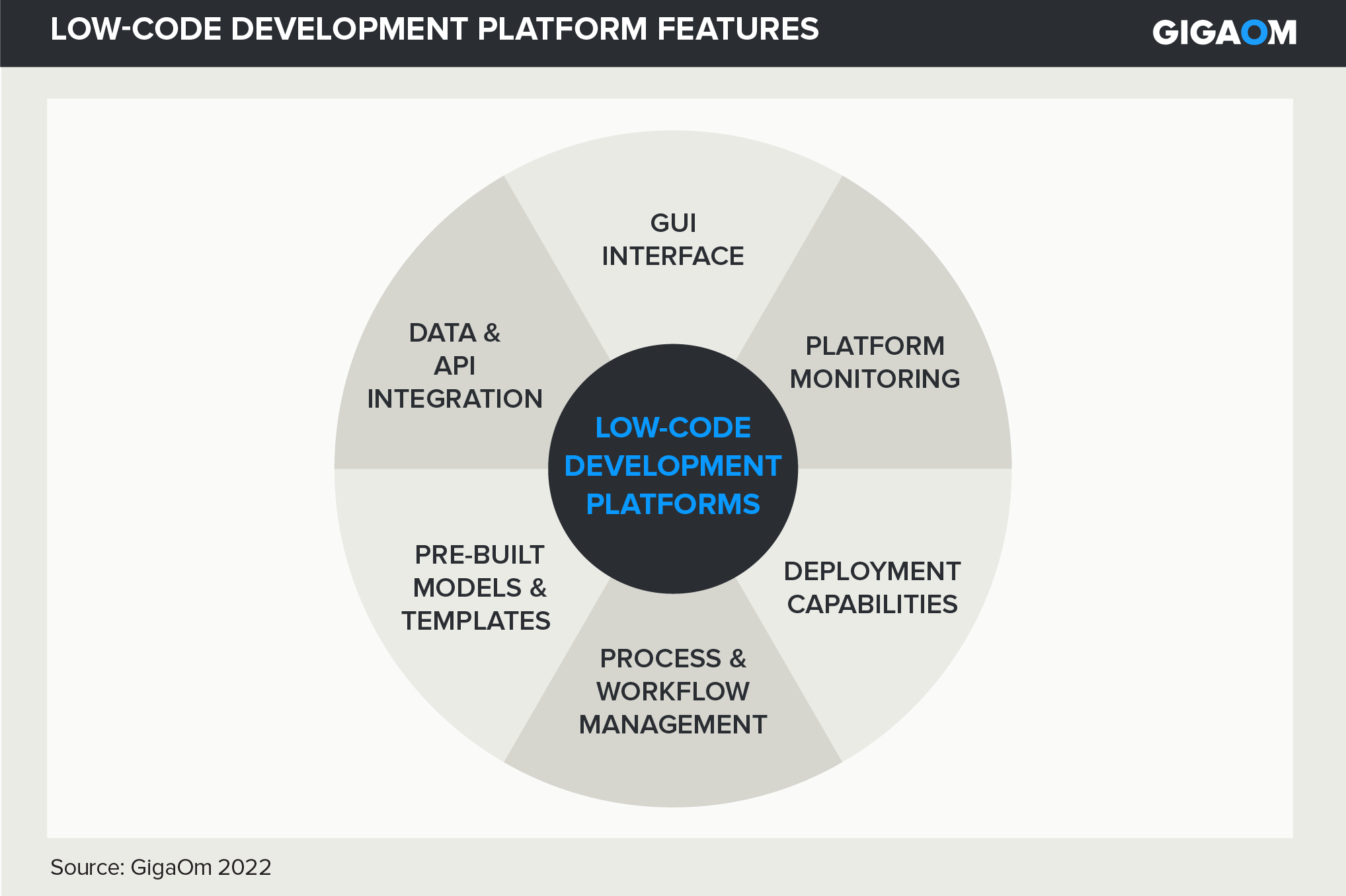Table of Contents
- Summary
- Low-Code Development Platforms Primer
- Report Methodology
- Decision Criteria Analysis
- Evaluation Metrics
- Key Criteria: Impact Analysis
- Analyst’s Take
- Methodology
- About GigaOm
- Copyright
1. Summary
Low-code development platforms (LCDP) give users the ability to rapidly create sophisticated software applications by abstracting out foundational components and minimizing hand coding. This allows for a more approachable, streamlined, and repeatable software development process.
One of the major barriers to entry in software development has always been the skills required to produce applications via traditional methods. Trained software developers are a highly sought-after resource and expensive to acquire. Architects and senior developers are necessary when building any production-worthy software because the build requires considerable groundwork. Therefore, the ratio of work to skilled personnel has been difficult to bring into balance.
LCDPs help solve this problem by abstracting away the foundational code inside bite-size modules, allowing businesses to utilize every developer to their maximum potential because now development can be purely focused on solving the business problem rather than building the software infrastructure. Business problems include workflow management, mobile application development, data forms and reports, and platform integrations.
LCDPs enable rapid development through the use of a GUI development system. Instead of using a traditional, code-based integrated development environment (IDE), LCDPs offer a more workflow-focused style of development, where users drag and drop pre-made actions onto a canvas to create the functionality they desire. This is where the term “low code” comes into play. These blocks of functionality are abstractions that developers configure through parameters and settings to achieve their desired result. Chained together, they produce a process that replicates code that another developer might also achieve through traditional means.
The “code” part of the development still exists; however, because these modules are so accessible, junior developers don’t have to rely on senior coders to write complex applications. Instead of reinventing the wheel each time, developers have a proven, tested, and repeatable piece of functionality they can use for many different, new applications.
Developing applications in this fashion is often superior to traditional development. In traditional software development, there’s a lot of setup and “scaffolding” code that goes along with the core “problem solving” code. LCDPs remove all of that noise and let the developers focus on solving the business problem.
Additionally, LCDPs are often integrated into other environments and platforms; for example, in sales and service automation or data integration. This benefits developers greatly because it allows faster customization of these environments and therefore quicker releases and a shorter time to market.
LCDPs have existed in the marketplace for almost 10 years, evolving into a framework that makes software development easier and more efficient for businesses through improved workflow, data integration, or specific functionality. Knowing which platform is the right fit for your business is critical to maximizing your ROI.

Figure 1. Low-Code Development Platform Features
How to Read this Report
This GigaOm report is one of a series of documents that helps IT organizations assess competing solutions in the context of well-defined features and criteria. For a fuller understanding, consider reviewing the following reports:
Key Criteria report: A detailed market sector analysis that assesses the impact that key product features and criteria have on top-line solution characteristics—such as scalability, performance, and TCO—that drive purchase decisions.
GigaOm Radar report: A forward-looking analysis that plots the relative value and progression of vendor solutions along multiple axes based on strategy and execution. The Radar report includes a breakdown of each vendor’s offering in the sector.
Solution Profile: An in-depth vendor analysis that builds on the framework developed in the Key Criteria and Radar reports to assess a company’s engagement within a technology sector. This analysis includes forward-looking guidance around both strategy and product.